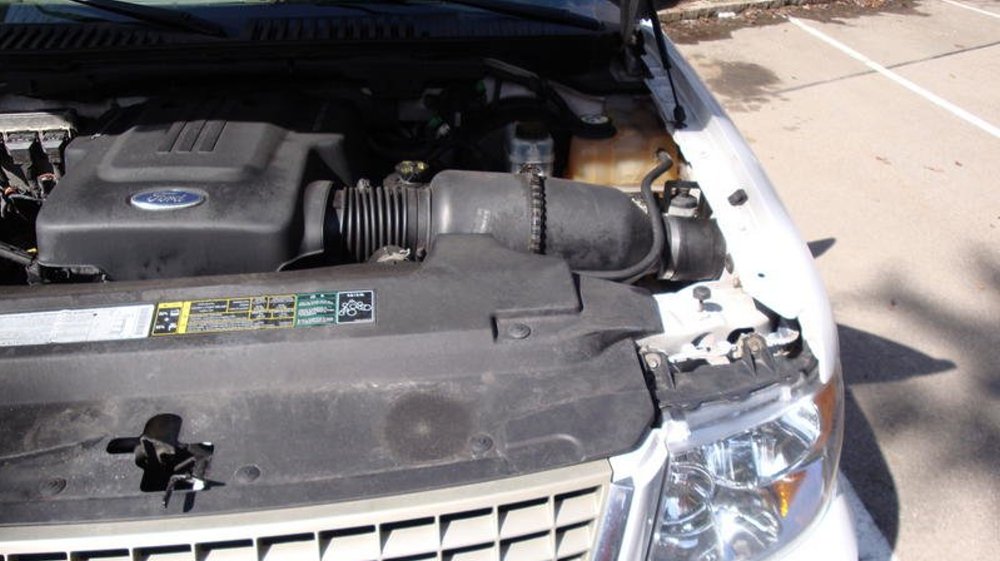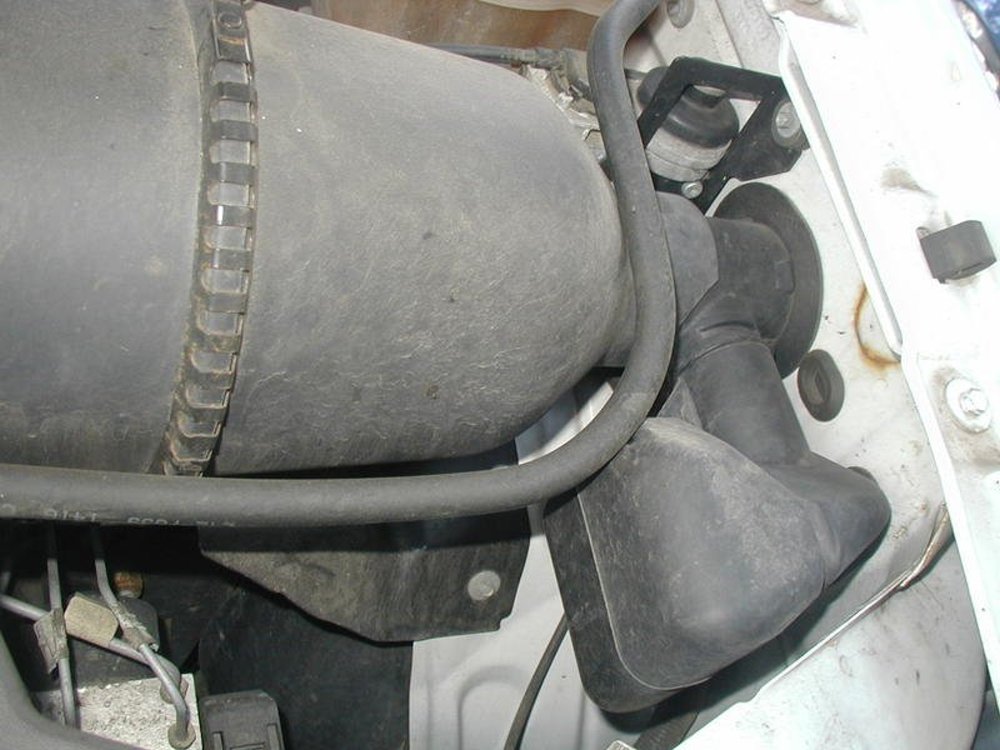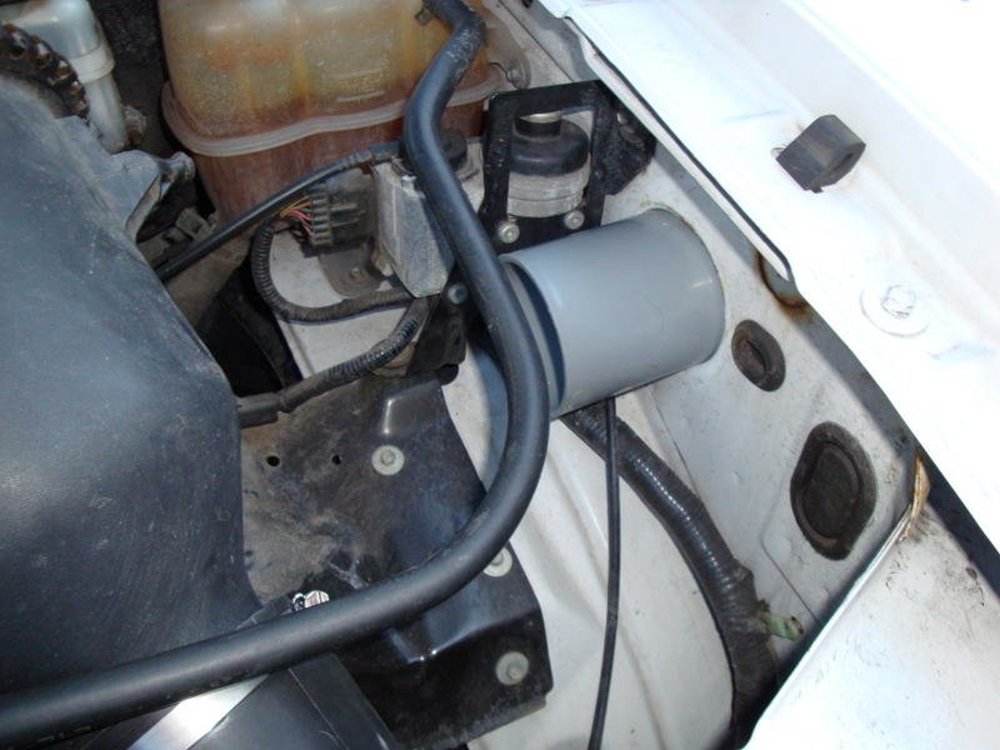D.I.Y.: 1997-2003 F-150 $8 Air Intake Upgrade

Help your F-150 engine breathe easier with this simple, inexpensive modification.
The factory engine air intake system for the 1997 through 2003 Ford F-150 has an area that restricts flow as it passes through the inner fender well. This air restriction can reduce engine power and efficiency, but F-150 Online forum member “tarajerame” has put together a great, simple DIY thread showing how to open up your F-150 engine air intake for about $8.
Project Introduction
When the OP first posted this engine air intake upgrade thread, he started with this unique introduction:
Do you feel your truck needs more air?
Are you not willing to pay $250 or more for a “cold” air intake for your ‘97-‘03 F-150?
Are you afraid of “cold air” intakes sucking in too much hot air from your engine bay?
Do you think drilling or cutting up your factory air filter assembly looks too tacky?
Are you afraid of permanent modifications to your truck?
Do you already have an aftermarket drop in filter?
Do you want to keep running paper filters?
Do you prefer the look of your factory intake?If you answered YES to any of the questions above; then look no farther than this simple easy modification to your factory intake that will be 100% reversible at any time if you are ever unhappy with the results.
The odds are good that most 1997-2003 F-150 owners would answer ‘yes’ to at least one of those questions, making this a great DIY thread for everyone who drives a truck from that generation. After all, this modification improves power and efficiency, so every F-150 owner can benefit from this simple, inexpensive upgrade.

Project Requirements
Next, the OP listed the tools and components needed to perform this simple upgrade to the F-150:
1 – Straight (flathead) screwdriver
2 – Sander, dremel tool, file, grinder or some kind of sanding device
3 – A 3-inch pipe flexible coupling (preferably black) inside diameter will be around 3 ½ inches to accommodate the outside diameter of the PCV pipe.
4 – a 3 inch diameter PCV pipe (black is preferred but color doesn’t really matter)
5 – 2 hose clamps (the pipe coupler should come with 2)
6 – 8mm wrench or socket

Provided that you have the tools on hand, you really only need to buy the coupler, the piping and the clamps for this modification and you can get them for about $8.
The Procedure
This DIY starts off as simply as changing the air filter, except once you have access the filter, you remove the portion of the air intake assembly that connects the filter box to the inner fender well. On that piece of the intake system, there is an inlet tube that tapers down to about two inches, creating a bottleneck in the intake system and with it, a restriction in the engine air flow. Fortunately, that pipe is easily replaced by a piece of three-inch PVC piping.

The DIY thread explains how to remove the stock air inlet pipe, how to shape the PVC pipe to fit through the hole in the inner fender well and how to affix the PVC pipe to the stock air filter housing. It is really that easy to introduce stronger air flow to the engine of your 1997 through 2003 Ford F-150 pickup, so for less than ten bucks and in less than an hour, you can perform this simple upgrade to improve engine power and efficiency.
